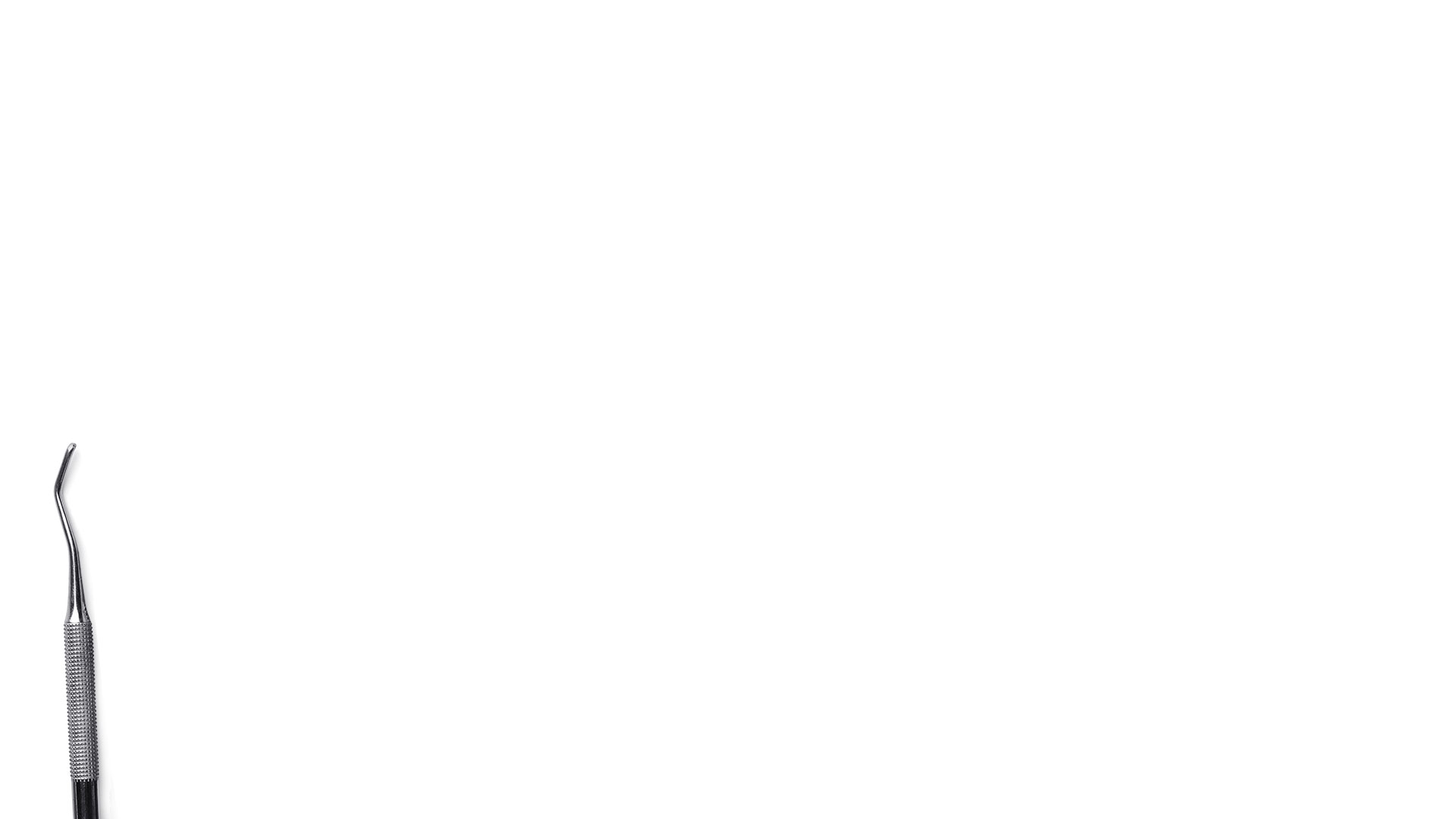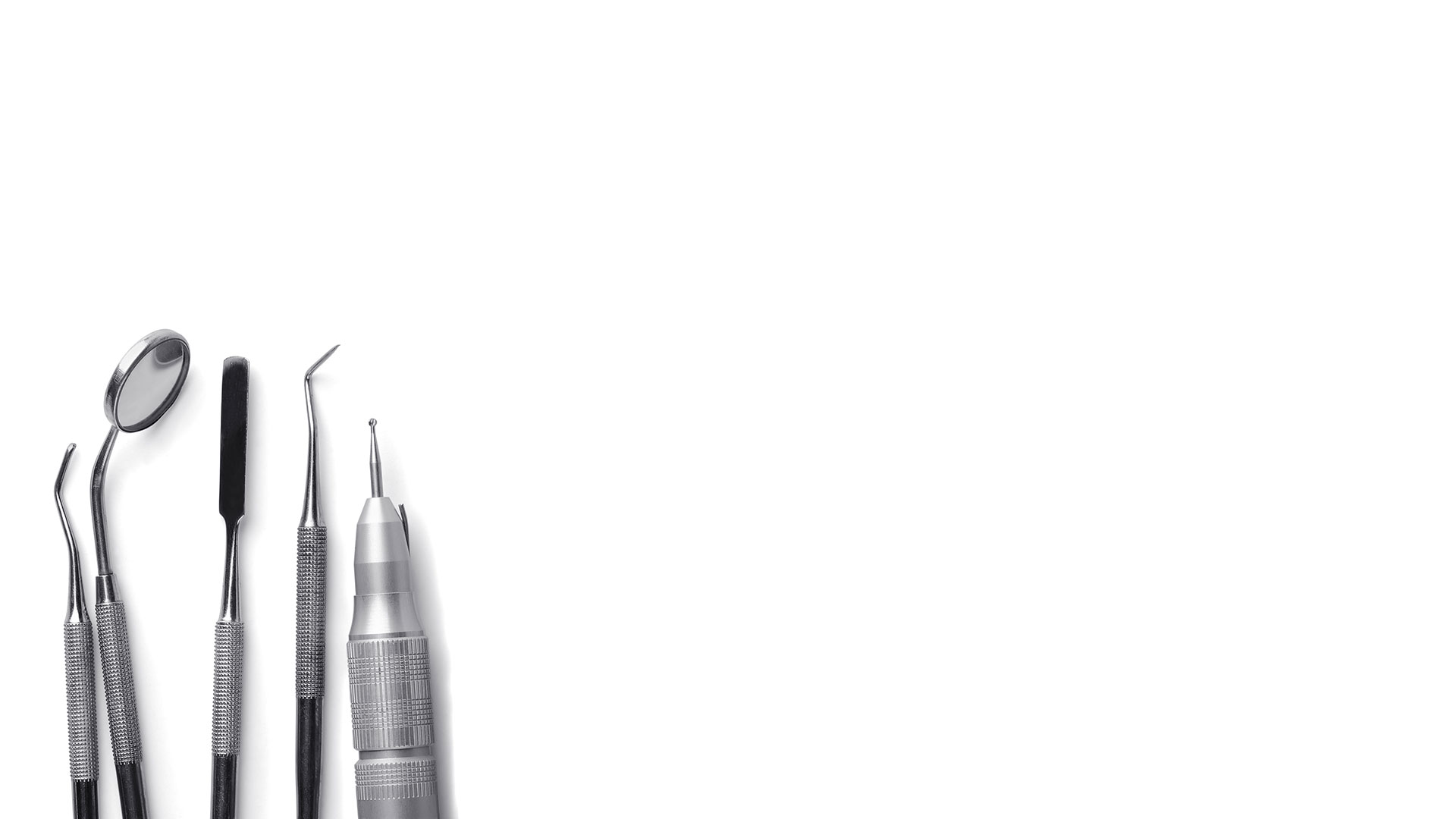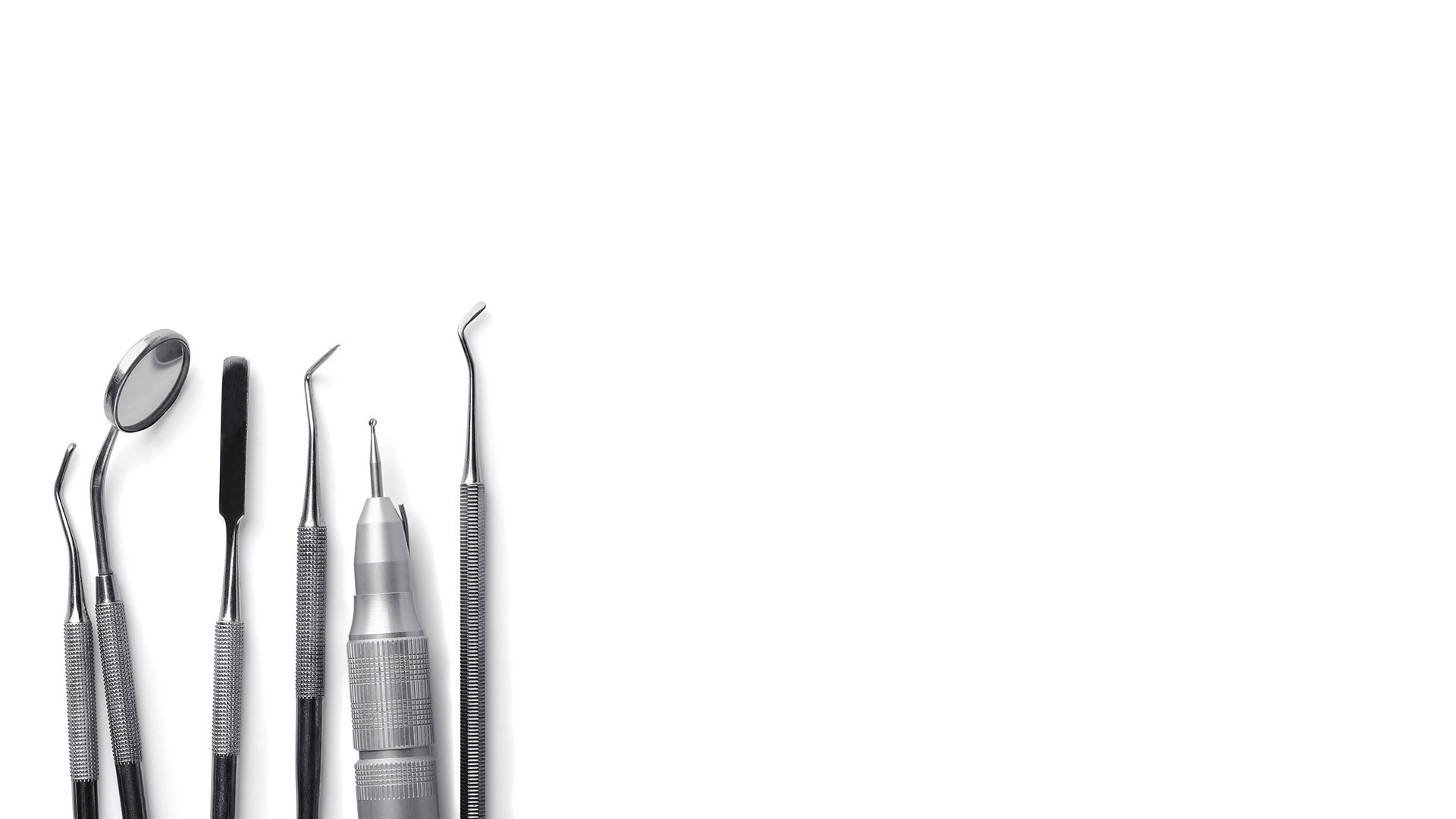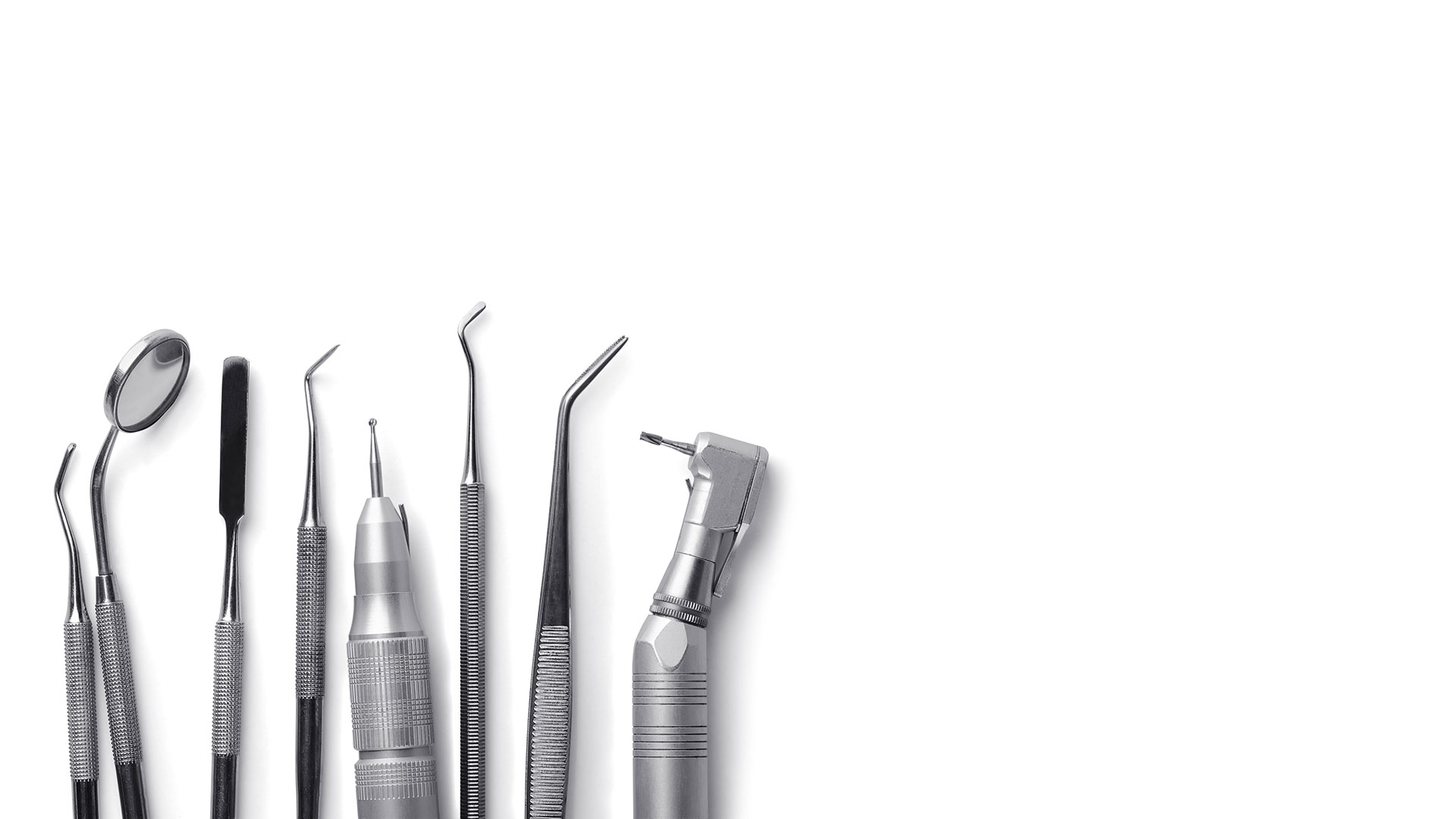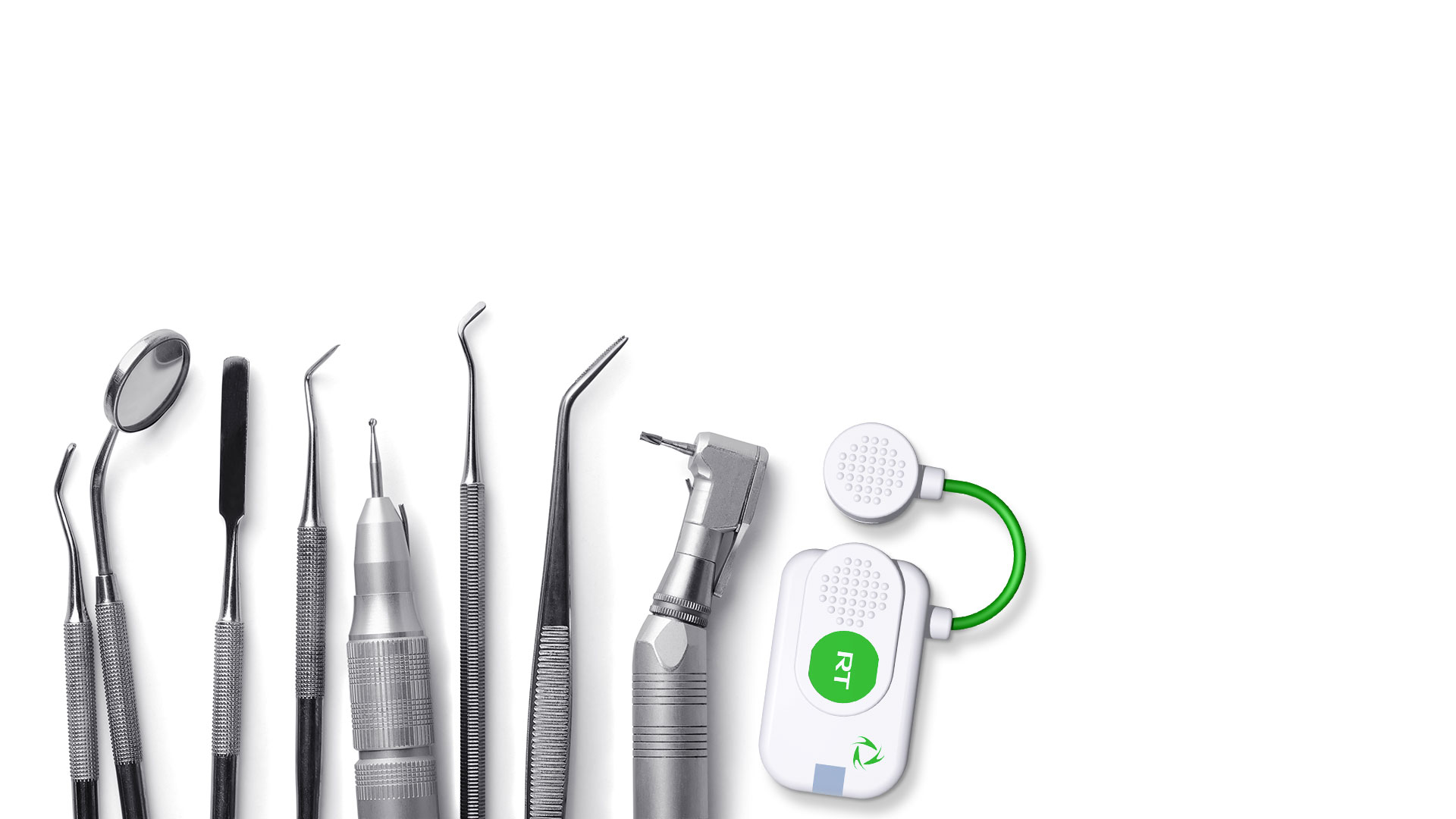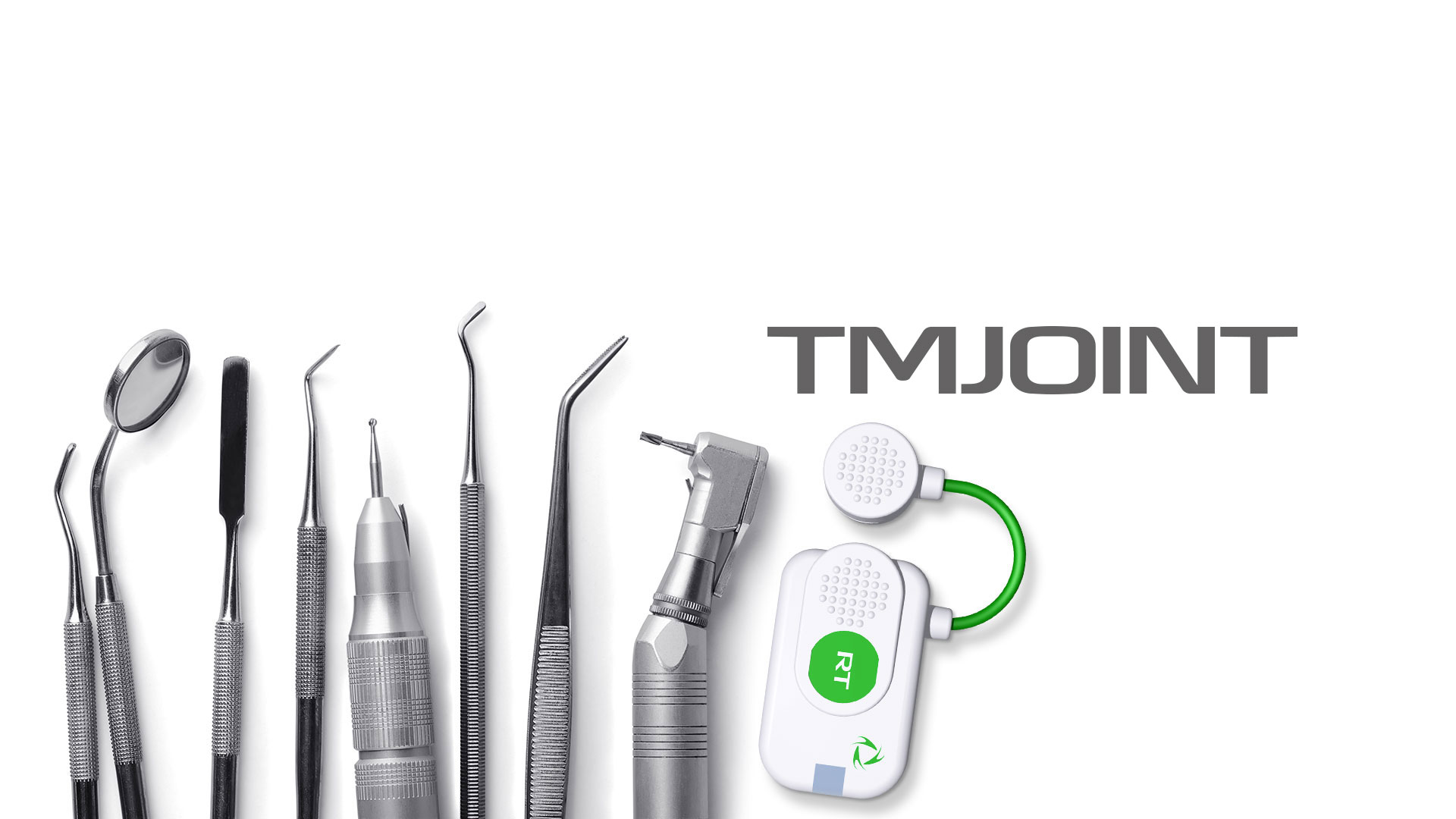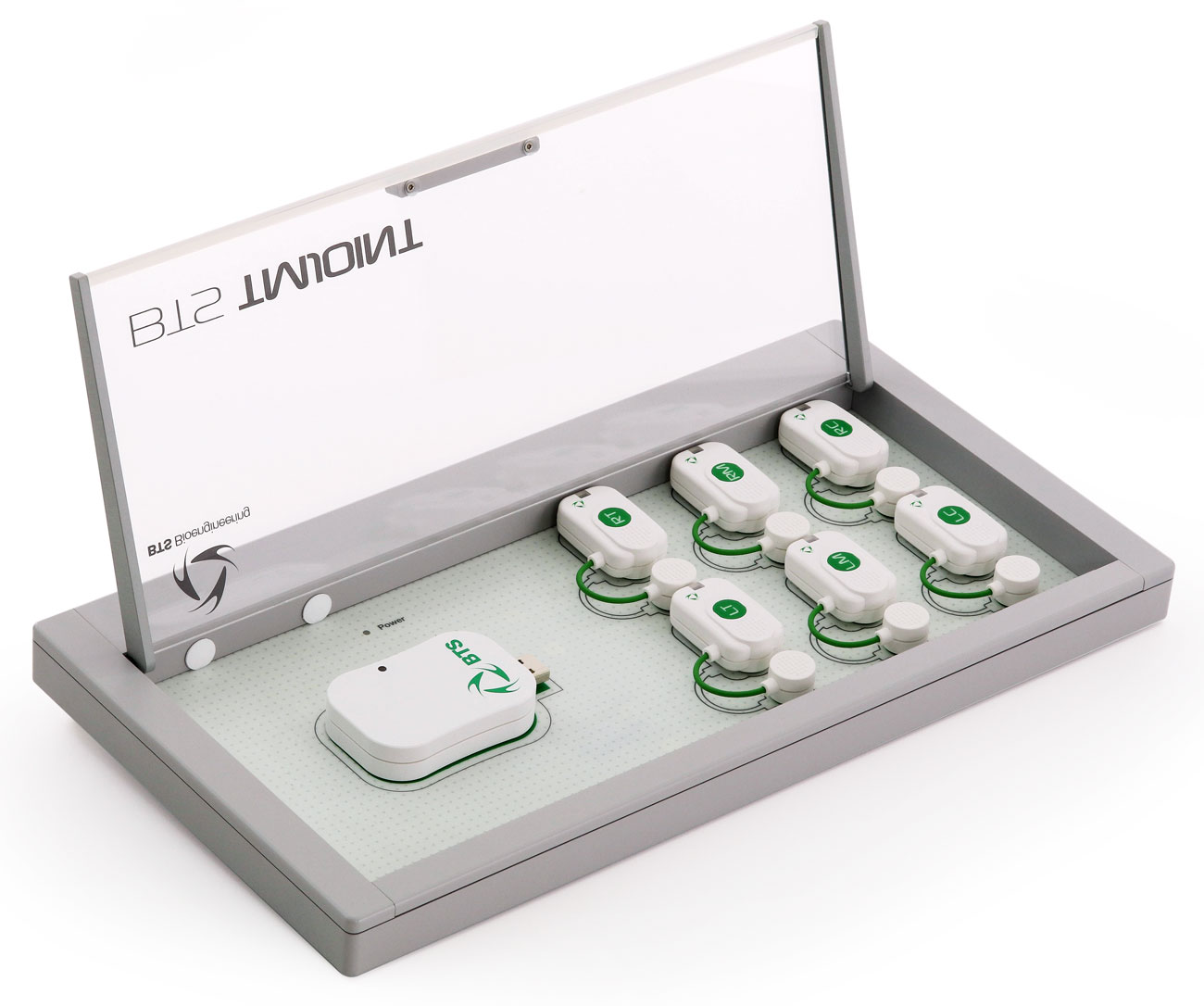

Dental malocclusion can adversely affect mastication, swallowing and posture, causing joint disorders, muscle tensions, dental problems, headache and cervical pain.
TMJOINT helps the dentist plan the most appropriate corrective dental treatments and evaluate their effectiveness.
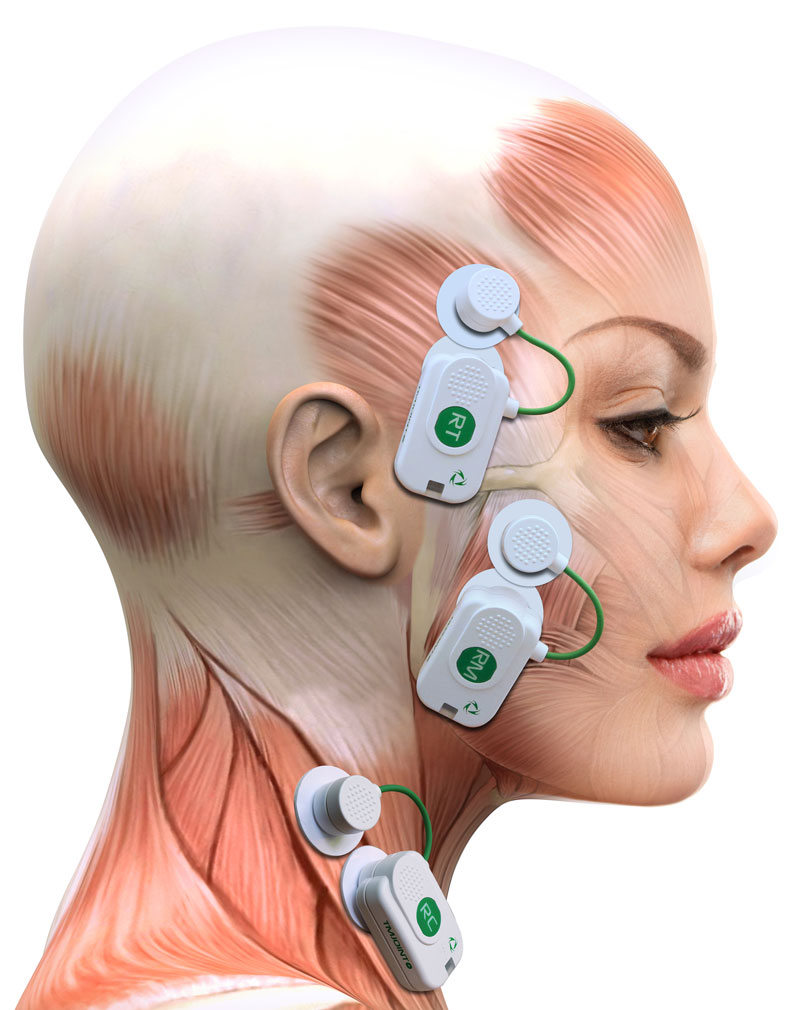
A complete exam in a few minutes
TMJOINT uses 6 wireless probes placed on the main mastication (temporal and masseter muscles) and neck muscles (sternocleidomastoids or trapezium). The probes, applied to the patient with common pre-gelled electrodes, detect the muscle activity during two clench tests of 5 seconds.
The system elaborates collected data and determines the presence or absence of prevalences, torsions and imbalances that can be originated by or result in different types of disorders and discomforts.
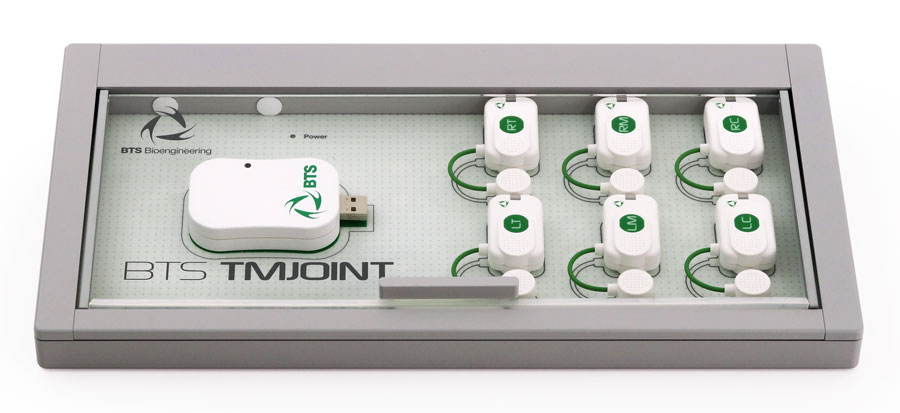
Only
minutes
for a complete exam
Up to
wireless
probes
Only
grams
battery included
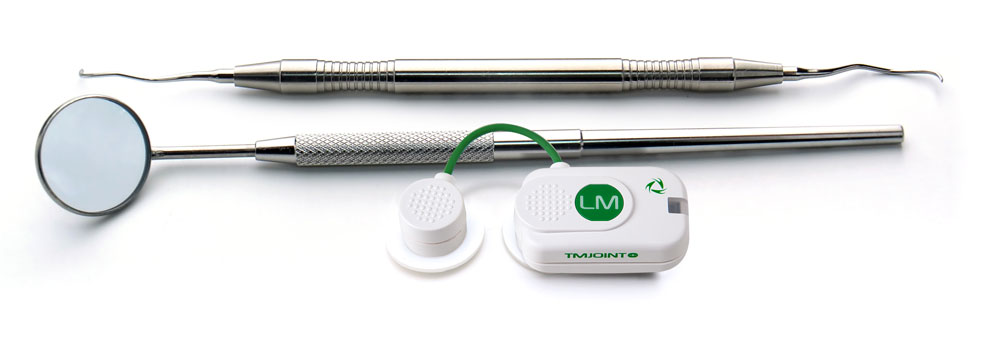
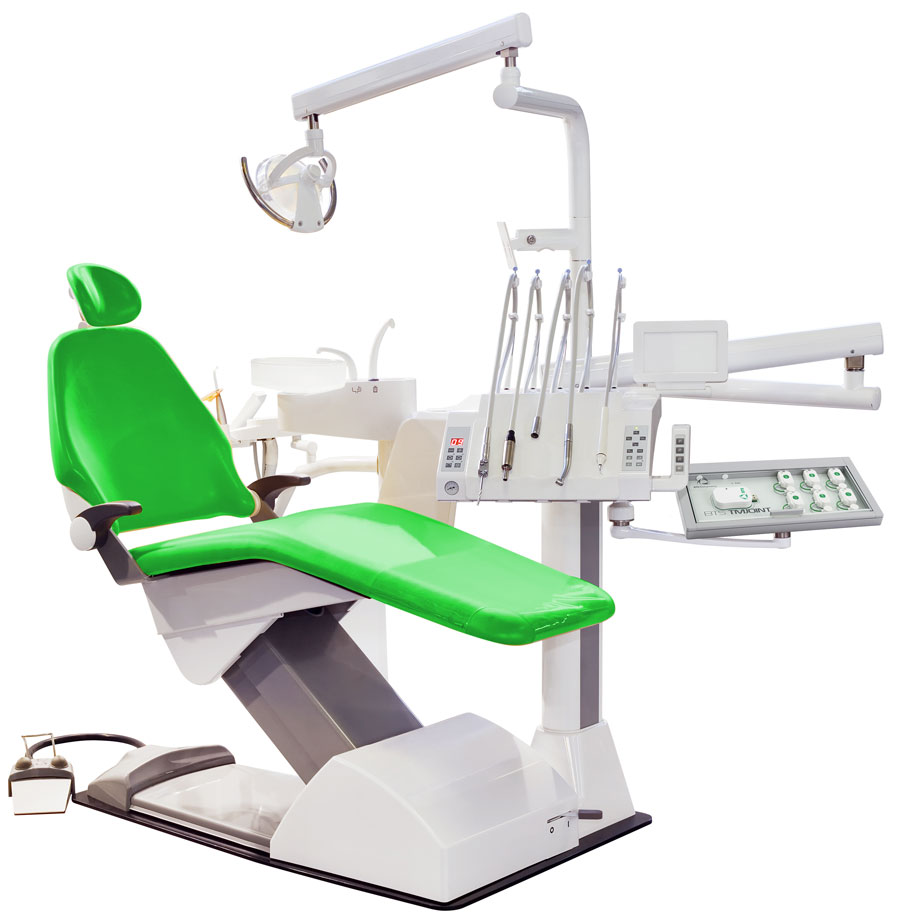
Documentable improvements and results
Tests stored in the database allow the dentist to follow evolution of the patient’s condition and effectiveness of treatments over time.
This scientific information, documentable with TMJOINT only, is a precious working tool and an actual support to clinical choices.
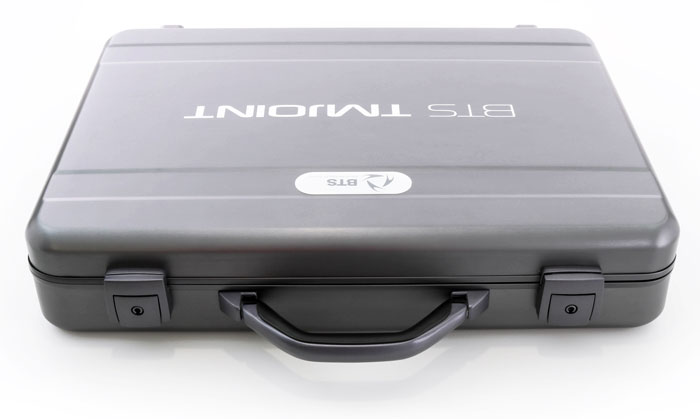
A revolutionary technology for dentists seeking well-being for their patients:
- Oral rehabilitation: treatment choice, temporary and permanent prostheses evaluation
- TMJ: pre-post splint, cranio-cervical mandibular disorders due to malocclusion
- Orthodontics: pre-post treatment
- Research and documents: treatment validation, biomechanics research
- Medical-legal examinations: appraisals, legal defense in litigation
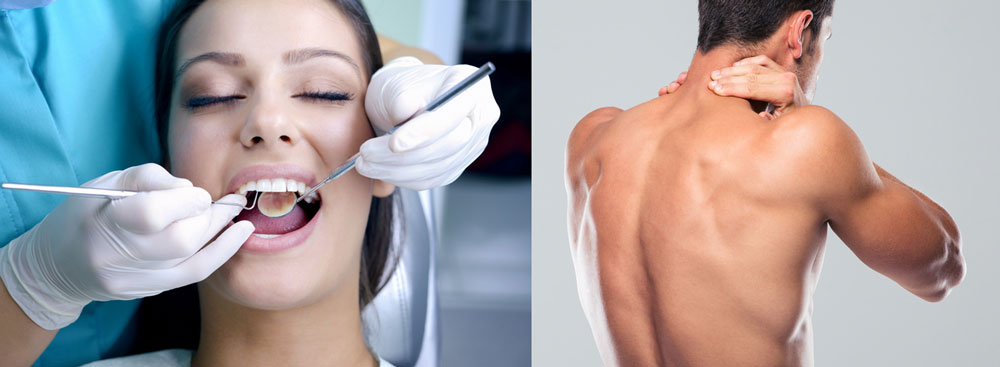
| wdt_ID | Column 1 | Column 1 |
|---|---|---|
| 1 | Wireless probes (Italian patent pending) | 6 |
| 2 | Surface electrodes | Variable geometry electrodes with snap connectors |
| 3 | Resolution | 16bit |
| 4 | Acquisition frequency | 1kHz |
| 5 | Data Transmission | wireless IEEE 802.15.4 (probes–USB receiver) |
| 6 | Battery | Rechargeable with proprietary charger |
| 7 | Autonomy | Over 8 hours of continuous acquisition |
| 8 | Status LED | Acquisition/stand-by mode and low battery |
| 9 | Weight | about 13 gr included battery |
| 10 | Dimension | 41,5×24,8x14mm mother electrode – Ø 16x12mm satellite |
| wdt_ID | Components |
|---|---|
| 1 | USB receiver |
| 2 | 6 wireless EMG probes |
| 3 | Aluminum Transport bag |
| 4 | Charger |
| 5 | BTS Dental Contact Analyzer Software |
| 6 | POC 6 Protocol |
| wdt_ID | Add-on |
|---|---|
| 1 | Workstation |
| 2 | CHEWING Protocol |
Request more information




